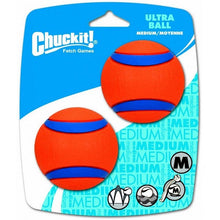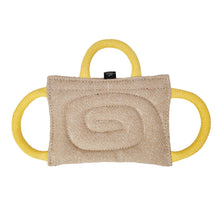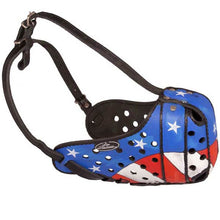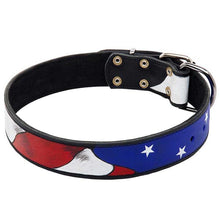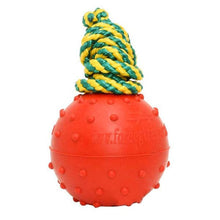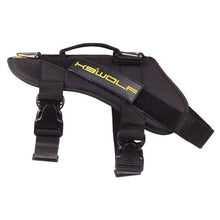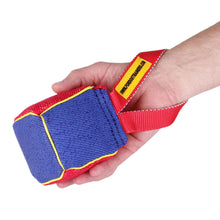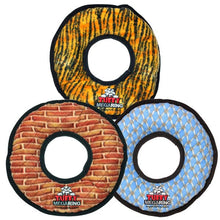The Correct Way To Use A Prong Collar

The prong collar – two words that are sure to spark lots of debate between dog owners. On one side, there are fans of the training tool and swear by its benefits. On the other, the people who consider them cruel and even dangerous.
The truth is, both sides have good points.
We’ve all seen the pictures of abused dogs with deep, festering wounds in their neck as a result of ill-fitting prong collars that have been continuously worn. Then there are the ecstatic owners who can walk their dog without being pulled down the road or who no longer fear losing control.
There is no doubt, the prong is a powerful training tool when used correctly and humanely. The upside is, they can quickly solve many problems and actually keep a dog safe. The downside is, in the wrong hands, they can easily be used incorrectly.
To know how to correctly use a prong collar, let’s take a look at when they should not be used:
• Should not be used as punishment
• Should not be used as a replacement for training
• Should not be used on aggressive dogs because they can cause more aggression
• Should not be used on nervous, frenzied, scared, or confused dogs
• Should not be used by people who don’t understand how to use them
• Should not be used to tie out or for anything other than walks or training
• Should not be left on
• Should not be used when fitted improperly
When should I use a prong collar?
The prong collar is a powerful training tool when used in conjunction with more positive, reward based training methods. In other words, before using a prong as a correction tool, the dog must be trained so they understand why they are being corrected.
For example, a person trains their dog to sit in the living room. Each day after work, they practice in the living room and as a result, the dog happily sits in the living room every time when asked. However, soon the owner realizes the dog won’t sit in the kitchen, garage, backyard, or at the vet.
Does this mean the dog is not obeying commands? No, it means the dog has equated the sit command with sitting only in the living room and needs training to learn to sit anywhere, everywhere, reliably.
This situation is not a problem that requires a prong collar correction. This is a problem that needs more practice and training so that the dog understands that the word sit means their butt hits the ground wherever they are. This takes work, practice, and the owner needs to be 100% certain that the dog is trained and understands the command.
However, once the dog has mastered this command, a prong collar might be used as a correction tool in an instance when the trained dog refuses to sit due to distractions after other correction methods, such as a leash correction, have been exhausted. In other words, a simple leash or voice correction may be all the dog needs to overcome the distraction.
For dogs that need more than a simple leash correction, a prong collar can be very helpful because they take very little pressure to be effective. They’re not used to inflict pain and punish but rather to correct, redirect the attention, and control the dog during moments of distraction. The owner can also control the level of correction needed from a gentle nudge to controlling a dog lunging on the end of their leash.
For example, let’s say a friendly dog knows how to heel but gets super excited and tugs toward people when on walks. Leash corrections haven’t worked and walks in public places are no longer fun. By introducing a prong collar, the dog will often self-correct when it feels the pressure.
On the other hand, for example, let’s take a dog that can be temperamental around strange dogs. The owner likes to go on walks but is always on guard when loose dogs approach. This dog might need a stronger correction to redirect its attention if its personal space is invaded or the owner may need to control the dog easier.
How do prong collars work?
Prong collars work by pinching when pressure is applied to the collar. The pressure is instantly released when the leash is relaxed or the dog stops pulling. There are many styles of prong collars available and small prongs work just as well as large collars.
When fitting a prong collar, the dog’s neck will need to be measured. The prong sits snug, high on the neck, at the base of the skull, as opposed to traditional collars, which ride around the neck and fit loose. The prong shouldn’t slide down the dog’s neck. In fact, with a properly placed prong, you should not have to remove your dog’s flat collar.
Prong collars can come apart and should be used with a backup collar, unless using a keeper prong collar. When prong collars come apart, it always happens when the dog is pulling and suddenly gets loose. You can also buy a prong collar leash, which attaches to the prong and regular collar.
Prong collars should only be worn on walks or during training. They’re not intended to be a collar replacement or tie out tool. Prong injuries usually happen when they are used incorrectly, left on the dog, or used to abuse an animal. In the right hands, the prong can be a safe and useful training aid for people who need it.
How to fit your dog for a prong collar:
We hope you found this article helpful and hope you’ll share it with your friends.
You may also like: How To Control A Dog On A Leash





